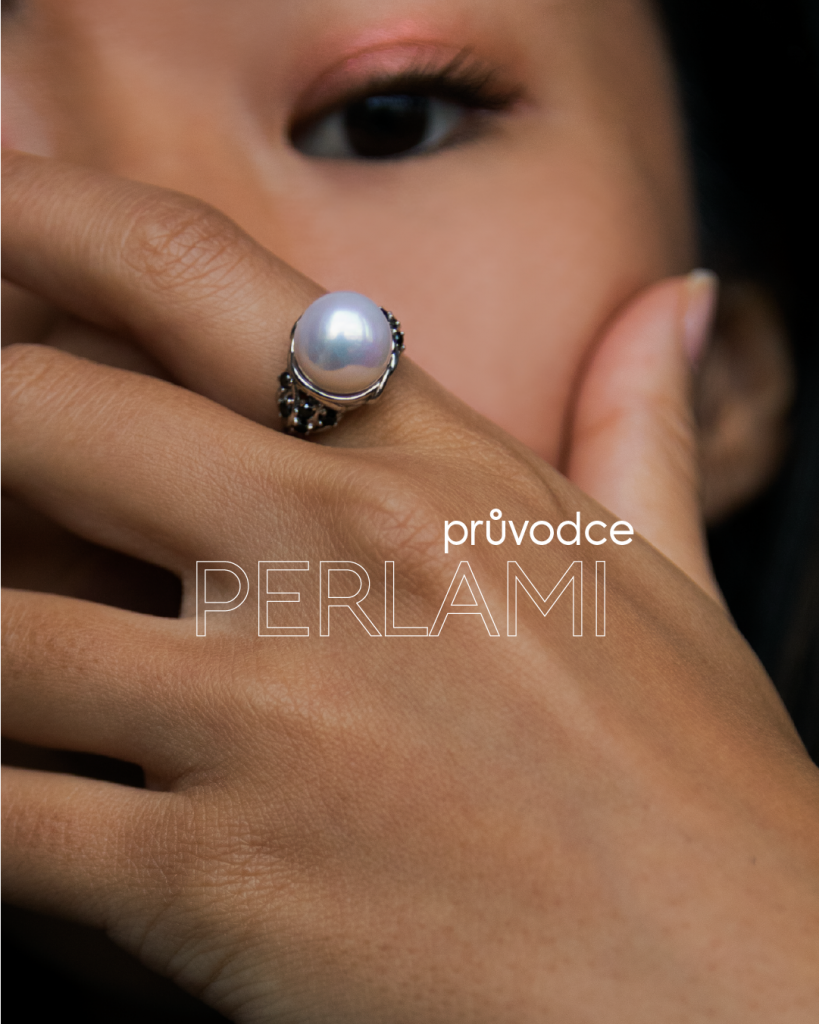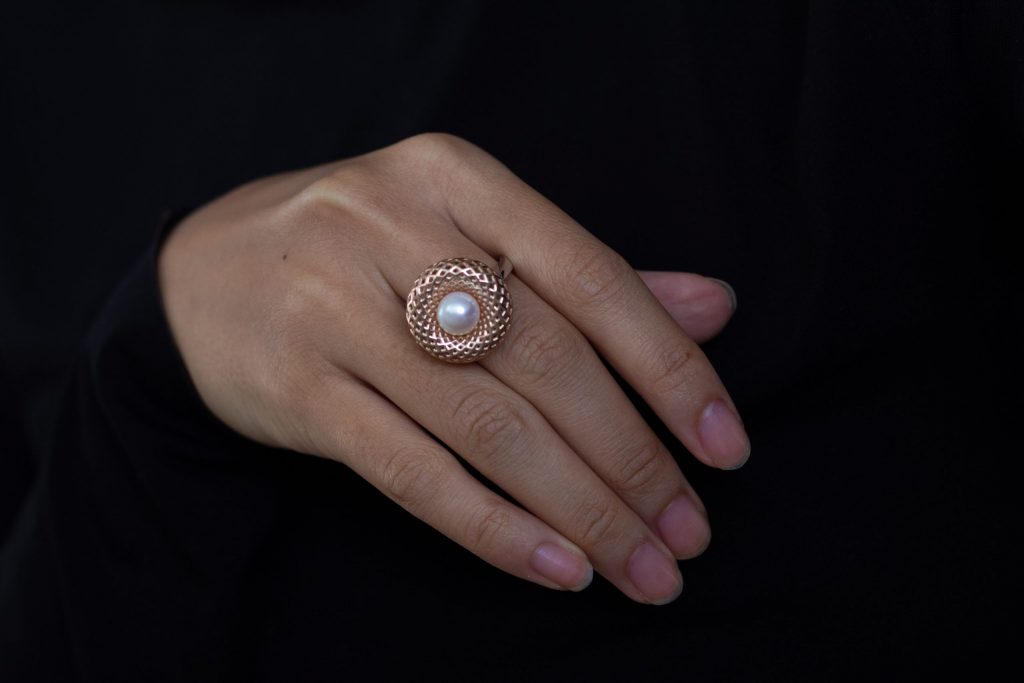Žádné produkty v košíku.
Průvodce světem perel
Perly. Jediné drahokamy, které vznikají působením živého organismu, opředené mnoha legendami a známé již několik tisíc let. Ať už se bavíme o perlách sladkovodních nebo mořských, můžeme s jistotou tvrdit, že každá je unikátním uměleckým dílem. Liší se barvami, tvarem, velikostí i leskem a její vzhled závisí primárně na prostředí, ve kterém se zrodila. Jejich vzácnost umocňuje fakt, že z 10000 ústřic přivede perlu na svět pouze jedna, maximálně dvě.

Jak perly vznikají?
Rodí se buď samovolně, kdy do lastury vnikne zrnko písku či jiné těleso, nebo v rámci chovu, kdy se do perel vkládá například úlomek schránky jiného mlže. To se uvnitř lastury postupně obaluje perletí, čímž se živočich neznámému tělísku brání.
Co je vlastně perla?
Víme, jak vypadají a kde přibližně vznikají, ale co jsou vlastně perly zač? Jedná se o formu uhličitanu vápenatého, především aragonit, díky kterému mají žádaný hladký a lesklý povrch. Na Mohsově tvrdostní stupnici dosahují hodnot 2,5–4,5, čímž se řadí mezi měkké drahokamy, které se snadno poškodí, mohou snadno ztrácet lesk a odlupovat se. Naopak kontakt s lidskou pokožkou výjimečně prospívá, čerpají z ní totiž vláhu, díky které si drží svůj lesk.
I u perel se využívá hodnotící škály, která pomáhá určit kvalitu perly, a to škála A-D či AAA-AA.
K vyjádření kvality se používá hodnotící škála A-D nebo AAA-AA. U prvního typu škály je nejlépe hodnocená A, nejhorších hodnot dosahuje D. V druhém případě je nejlepší hodnocení AAA, přičemž princip zůstává stejný. Tato škála navíc využívá znaménka +. Druhá nejlepší nese hodnocení AA+, následně AA, A+ a nakonec A.
Mořské perly
Nejčastěji perly dělíme na mořské a sladkovodní. Mořské, jak je z názvu zřejmé, pochází z moří a oceánů. Jejich vzhled závisí hlavně na prostředí a lastuře, ve které se rodí. Mezi nejznámější perly patří perly tahitské, Akoya a jižního Pacifiku.
Tahitské perly
Tahitským perlám se oprávněně přezdívá královny perel. Pyšní se velmi rozmanitou barevnou škálou, výjimečně silnou vrstvou perleti a magickými odlesky. Vznikají v lasturách perlorodek mořských, neboli Pinctada Margaritifera. Barevné spektrum tahitských perel se pohybuje od od stříbrné, přes zelenou, duhovou až po sytě černou. Barvu významně ovlivňuje vzdálenost perly od vnitřní skořápky – čím dále roste perla od skořápky, tím bývá světlejší a chytá spíše stříbrné a stříbrošedé odstíny. Z hlediska tvaru jsou tahitské perly velmi variabilní, mohou mít jak symetrický kulatý tvar, tak tvar kapky, hrušky nebo knoflíku. Nabývají velikosti až 1,8 cm, vše výjimečně vzácných případech mohou být i větší. S velikostí roste i jejich cena.
Tahitské perly se svou velikostí pohybují na škále od 8 do 18 mm. Některé zdroje uvádí, že mohou nabýt i větších rozměrů. V takových případech se ale vždy jedná o velice vzácné kousky. Průměrně mají perly mezi 8 až 12 mm a platí, že čím je perla větší, tím je cennější.
Akoya perly
Symetrie, lesk a krémově bílé odstíny, to jsou japonské perly Akoya. Ústřice se narozdíl od ostatních perlorodek nacházejí v chladných mořských vodách, které způsobuje mnohem pomalejší růst perleti. Perly Akoya se proto výjimečně lesknou. Průměrně dosahují velikosti okolo 7 mm, což je méně, než ostatní mořské perly. Perleť nabývá barvy krémové až stříbrné bílé, výjimečně i růžové až modrošedé.
Perly Pacifiku
Nejvzácnější ze všech druhů perel jsou jednoznačně perly Jižního Pacifiku, a to zejména kvůli náročnosti na prostředí. Produkuje je měkkýš Pinctada Maxima, který může v extrémních situacích dosahovat až velikosti talíře. Produktivní jsou až ve hloubkách okolo 80 m, odkud se loví a odvážejí do oblastí, kde se pečlivě kontroluje jejich vývoj. Z hlediska velikosti se pohybují na poměrně široké škále, a to od zhruba 8 do 22 mm. Raritou jsou takzvané Keshi perly typického nepravidelného, barokního tvaru. Jsou tvořené pouze perletí a jejich velikost dosahuje 2-8 mm.

Šperky s mořskými perlami najdete zde.
Sladkovodní perly
Sladkovodní perly dosahují obvykle menších velikostí než perly mořské, vyznačují se také širší škálou tvarů a barev. Jejich cena je nižší, čímž se stávají oblíbenější volbou pro každodenní nošení. Jejich odolnost je oproti perlám mořským menší, snadněji se opotřebují a obecně by se s nimi mělo zacházet velmi opatrně.
Vytvářejí se v lasturách sladkovodních mušlí, tj. v řekách, rybnících a jezerech. Nejoblíbenějším tvarem je tvar kulatý, populární jsou ale i nepravidelné barokní perly, polokulaté perly a oválné perly.

Šperky se sladkovodními perlami najdete zde.